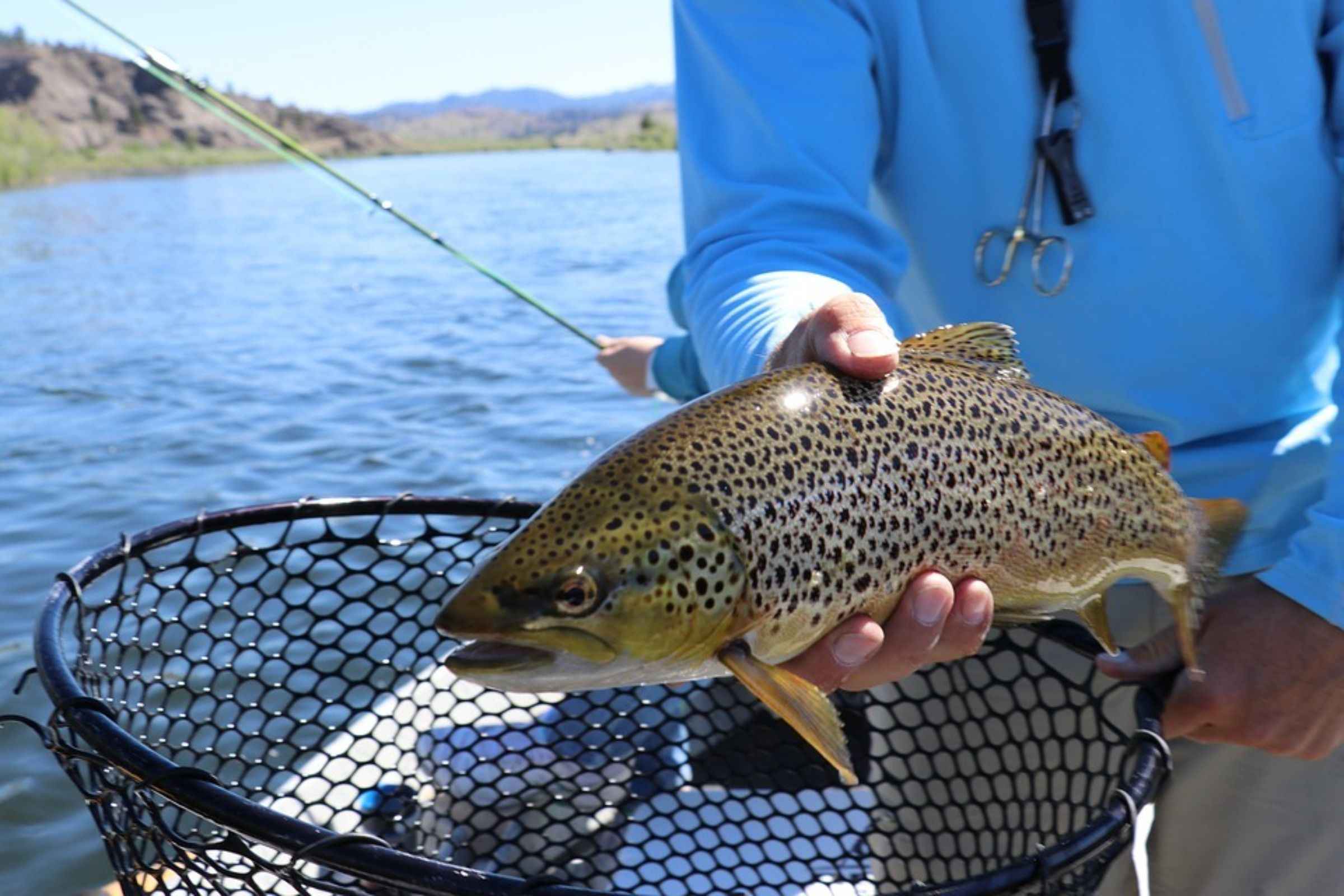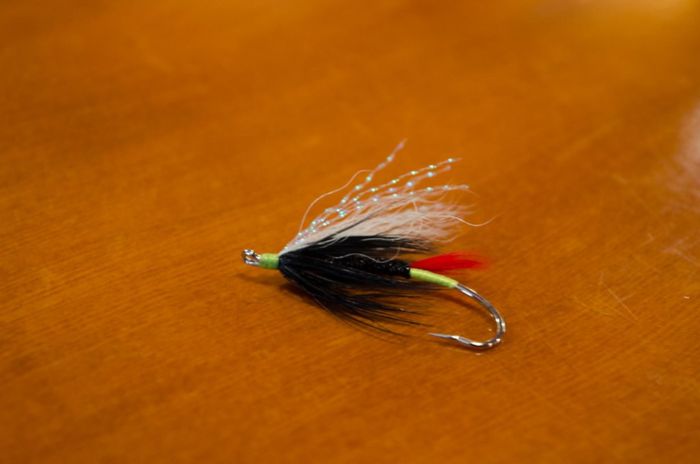The 12 Flies That Will Catch Trout Anywhere
If you want to catch trout every time you go fishing, here is a complete list of flies you should use.


Trout are some of the most popular game fish in the world. They normally feed on insects, invertebrates such as small crustaceans, and other fish such as minnows. It’s also not unheard of for trout to feed on other animals such as shrews and mice. There are many techniques one can use to catch them, including float fishing, bottom fishing, and using spinners and spoons. The artificial flies we’ll be covering in this list are designed to be able to resemble different types of trout food - some can even pass as small baitfish.
1.Parachute Adams
This is a staple for any angler’s fly box. It is one of the most popular dry fly patterns - and for good reason. It’s versatile enough to imitate a range of different adult-stage aquatic flies such as midges and mayflies. This makes it a great, reliable lure for trout fishing, particularly in the early summer. Its round, spiky form gives it high visibility for both fish and angler - you’re unlikely to have difficulty locating this lure in the water.

2. Bead Head Prince Nymph Fly
Developed by Doug Prince - after whom it was named - this wet fly pattern imitates a number of different aquatic insects trout are drawn to, such as stoneflies and sowbugs. The bead head adds weight to the fly, helping it sink to the bottom of the water for a better chance of luring fish. Two white goose biots form a pair of wings attached to the back of the head, while another pair of biots act as a forked tail on the back of the fly.
3. Bead Head Pheasant Tail Nymph
This is also known as the Sawyer’s Pheasant Tail, as a reference to its designer, Frank Sawyer, who designed it in 1958. The pheasant tail nymph is a well-known imitation among anglers. It is effective to use at midday from May to August when callibaetis are in season, as it closely resembles this species.
4. Elk Hair Caddis Fly
It’s more difficult to lure trout to the surface in the summer - warmer waters make for lower levels of dissolved oxygen, so fish are less likely to be active swimmers during this time of year. One effective way to get them moving is by using an Elk Hair Caddis Fly, a dry fly whose legs appear to wriggle in the water when you move them in the water. This movement is irresistible to nearby trout and will have them swimming towards your lure. Elk Hair Caddis is a popular trout lure among anglers and most resembles caddisflies, but can also be mistaken for smaller stoneflies.

5. Hot Wing Caddis
This dry fly puts a modern twist on the Elk Hair Caddis. What sets it apart from its more traditional predecessor is its bright color that makes it more visible to you as the angler and to the trout underwater. Regardless of your level of expertise as an angler, you can benefit from having a hot wing caddis in your fly box.
6. Graphic Caddis
Designed by John Barr, the Graphic Caddis is meant to imitate an emerging caddis pupae. Barr has even added tubes of holographic flashabou at the back of the fly, meant to replicate the air bubble that caddis pupae leave in their wake as they swim to the surface. Anglers often use this in conjunction with other flies to maximize their trout-catching potential. Any fly box needs a selection of different caddis so you’ll have plenty of options in case you encounter any difficulties catching fish.
7. Hornberg
Originating from the Midwest, the Hornberg was created by Frank Hornberg in the 1920s. It can be used as a dry fly or a streamer. When used as a dry fly, it can resemble a stonefly or caddis. When stripped and submerged, game fish can mistake it for a baitfish. While it’s mainly used for trout fishing, Hornberg flies are also known to attract panfish. A pair of mallard breast feathers - usually gray - form the wings of the fly, usually with yellow hackles in between to further conceal the shank. The result is a versatile and natural-looking fly that can catch fish all year round.
8. Pass Lake
This well-known wet fly pattern is particularly popular in Wisconsin, where it was originally developed in the 1930s by a man called Rev. E. Stubenvoll. It has inspired many other variations over the years including the Pass Lake Kid, Pass Lake Emerger, and Pass Ant. Though it was originally a wet fly, some variations are intended for dry fly fishing.
9. Pink Squirrel Fly
This popular wet fly pattern was designed by John Bethke, another Wisconsinite. It was intended not to imitate a specific insect or bait. True to its name, the pattern has pink ice dubbing on the collar. Its iridescent tail is formed by 4 or 5 strands of Pearl Krystal Flash. The Pink Squirrel is a wet fly that’s heavy enough to sink to the bottom of the water with little to no trouble. Its unique color makes it ideal for fishing in the winter through the spring.
10. Zebra Midge
Designed to imitate a midge pupa fly, the Zebra Midge is one of the easiest patterns to tie, so it’s beginner-friendly. Being a smaller fly, it’s great for trout fishing in the late fall and early winter, when insects are smaller in size. While it most commonly comes in black, it’s easy to modify it to appear in other colors simply by using a different color of thread. Other tried-and-true colors for Zebra Midges include brown and olive.
11. Sow Bug
Sow bugs are a reliable protein source for trout. Naturally, the sow bug fly pattern is a favorite among anglers as they’re known to be able to catch fish any time of the year and are easy to tie. There are many sow bug patterns to choose from. One of the more popular variations is the Ray Charles, which you can tie with or without soft hackle, and commonly appears in grey, tan, or even pink. The Ray Charles has a variant called the Firebead Ray Charles, so named because a bright orange bead is used to form the head. The color makes for better visibility in the water and can be used to resemble insect eggs in the spring.
12. Muddler Minnow
This is a streamer type fly pattern designed by Don Grapen. Crafted with a head of clipped and spun deer hair, it imitates the slimy sculpin, a species of fish that larger brook trout are fond of feeding on. Its versatility makes it a staple for many anglers as it can resemble a variety of aquatic insects including crayfish, crickets, grasshoppers, minnows, and mayflies. The Muddler Minnow has inspired many subsequent fly patterns, including the Marabou Muddler, Spuddler, Muddler Hopper, Searcy Muddler, and many more.
You may choose which fly to use depending on how experienced you are as an angler or what season it is. Less experienced anglers, for instance, might gravitate towards using brightly colored flies as they are easier to spot. Brightly colored flies are also a popular choice in the late summer and early fall, when rainfall can cause bodies of water to appear murkier or less clear. The flies we’ve listed above are all handy to have in your fly box if you’re trout fishing regardless of season or experience.




